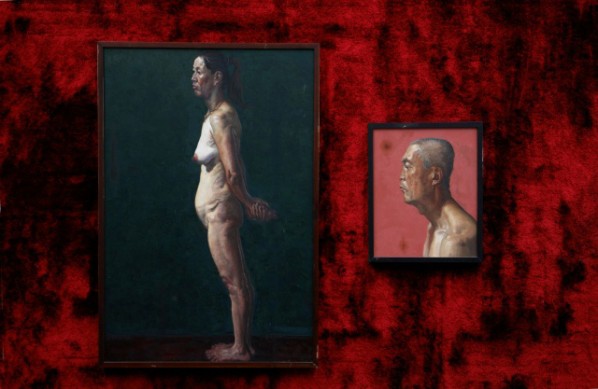
As the opening exhibition of Minsheng Art Museum in 2012 Chinese lunar New Year, The "Face” will be rendered between March,10 and April,28. The exhibition will present a total of 76artists’ works as the first part of a special series of easel paintings mainly to reunderstand portrait painting.
Until 1980s, the realistic traditional Chinese portraits, represented by Luo Zhongli's “Father” of the early 1980s, occupied a dominant position.,. After the 1990s, this mirror-like realism gradually changed. “The middle-aged men and women in silent” by Zhang Xiaogang, “bored young people” by Liu Xiaodong, “vain bald” by Fang Lijun are deformations of the portrait in both exaggerated and convergence, outbreak and repression, enthusiasm and indifference. These portraits have little difference with Luo Zhongli's “Father”. The difference falls in the way of leading people to the introversion. They just differ in intrinsic and human nature. After them, the portraits soon entered another state: in the new century, you could barely see the portrait of a portrait painting. Realistically Abandoned, all portraits are distorted and deformed for a true portrait--the distortion of the various organs, face distorted, the distortion of the body. Following this transition, the painting is no longer just recording and reproduction, but had the other goals. This is what today's the background of the portrait.

Li Dafang-The Great Scarlet, 2011; oil on canvas, 250x350cm
Looking at the contemporary Chinese portraits, we can outline a simple pedigree: a realistic portrait, but no intrinsic (from the 1950s to the 1970s); lifelike portraits, while the intrinsic (1980s); realistic portraits, but also filled with the inner (1990s); realistic portraits, there is no inherent - this is the situation today. Past portraits exercised the functions of the record, replication of the 19th century machine technology and camera to the portrait began to retreat. But portraits own particularity, as Benjamin said, painting a unique glow to glow in the given object at the same time also received their own Halo, which is an important difference with the machine simply copy the object.
The "Face” ,does not intent to find a worship location for the portraits in the palace of art, but to open up more possibilities as an important resource for the portrait, how to use historical resources, develop portraits, rather than digest portraits. So, the portrait is not just to paint a person, but rather to explore how to draw a person; not going to show all the existence of this person, but to explore all the possibilities of this appearance; how to draw a person becomes much more important than what you’ve painted. This is an important turning point in contemporary portraiture. Today's portrait is intended to decode the portrait, and thus become a testing ground for a painting, the exhibition has become the best portraits of the test site.

Wang Luyan-The other self
Painting plays a crucial role in one of the earliest carrier experiments of the avant-garde art. To video, installation and other artists for the creation of vector, the earliest use of painting language express concepts. Therefore, in this exhibition, the curators invited video, installation artists regain the brush, and create many rare easel works. We hope that through this exhibition, to explore the portraits of contemporary artists’ eyes and viewers to take a taste of the eternal charm of the painting.
Date: Mar 11,2012 - May 20,2012
Venue: Minsheng Art Museum
Curator: JuXin He, Xiaoli Guo
Organizor: Minsheng Art Museum Minsheng Contemporary Art Research Center
Courtesy of Mingsheng Art Museum, for futher information please visit www.minshengart.org




























